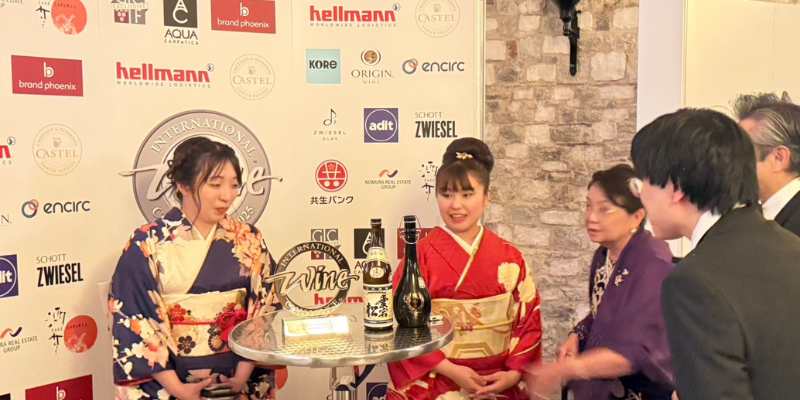In 2023, the Japanese sake market faced unprecedented challenges, reflected in the latest sake export and import statistics. Despite these obstacles, the resilience of this traditional beverage's global appeal is evident through its performance across various countries. This blog post delves into the dynamics of sake import from Japan, offering insights into how the landscape of sake export statistics has evolved over the past year.
Sake Import Market Highlights
The year 2023 marked a significant shift in the trajectory of Japanese sake exports. After 13 consecutive years of growth, the sake export market encountered a downturn, with both the total value and volume of sake exports declining from the previous year's highs. This change was largely influenced by global economic factors, including the recession and inflation, particularly impacting major markets like China and the United States.
- The total value of sake exports in 2023 was 41.08 billion yen (around $275M, 87% YoY) and the volume around 29,000 liters (81% YoY).
- The top 5 sake importing countries (on value basis) are China, USA, Hong Kong, Korea and Taiwan.
- The average price of exported sake has risen to over 1,407 yen/ℓ.
Sake Import Statistics 2023

The total export value of sake fell to 41.08 billion yen (around $275M), achieving 87% of the previous year's figure, while the volume dropped to around 29,000 kiloliters, reaching 81% of the prior year's total.
The decrease in export value and quantity was notably less pronounced in terms of value, suggesting a continued demand for high-value sake products despite overall volume declines.
Sake Import Statistics by Country
- China and the United States: The largest impacts were felt in China and the USA, which together account for about half of the total export value and quantity. In China, economic slowdowns and temporary import restrictions on Japanese seafood adversely affected high-end Japanese restaurants, a key channel for premium sake. In contrast, the US faced challenges related to inventory adjustments and a dampened consumer sentiment due to staffing shortages and inflation.
- Growth Markets: Despite these challenges, positive growth was observed in several countries. South Korea and Taiwan, in particular, showed robust increases in both export value and volume, alongside Italy, Brazil, and Spain surpassing their previous year's figures.
- Diversification of Export Destinations: The number of countries importing Japanese sake expanded to a record 75, indicating a broadening of the market base beyond traditional strongholds.
In 2023, China was the top destination for Japanese sake exports by value, with approximately 124.7 billion yen (88% of the previous year), while the United States led in volume.
South Korea and Taiwan experienced growth in both export value and volume, with South Korea at 29.0 billion yen (115.1% of the previous year) and Taiwan at 26.8 billion yen (120.5%). Italy, Brazil, and Spain also saw increases.
On a per liter basis, the USA imports over 6.5 million liters sake. This converts into approximately 9 million 720ml sake bottles. China imports roughly 5.7 million liters sake, followed by Korea with almost 4.2 million liters. In the top 10 sake importing countries only Korea and Taiwan saw a growth of total volume imported in 2023.
The total number of sake import countries reached a record 75 countries in 2023, indicating a broadening market for Japanese sake globally. In 2007 Japanese sake was only imported to 53 countries.

Average Sake Price
Despite a decline in overall export volume and value for Japanese sake in 2023, the per-liter export value continued its upward trajectory, reaching an all-time high. This increase reflects the ongoing trend towards premium Japanese sake, especially notable in markets like China, Hong Kong, and Singapore where the per-liter price exceeded 2,000 yen.
Over the last decade, this figure has more than doubled from 650 yen per liter in 2013 to 1,407 yen in 2023, indicating a strong global demand for higher-priced sake varieties.
Future Outlook And Conclusion
Looking forward, with the continuous growth of inbound tourism to Japan and popularity of Japanese food concepts, we are confident for a positive direction in the upcoming years. Moreover, the trend towards premiumization continues, with the per-liter export value of sake reaching new highs, underscoring the enduring appeal of high-quality Japanese sake on the world stage.
While 2023 presented significant challenges for the sake export sector, the strategic shifts towards diversification, premiumization, and targeted marketing efforts offer promising avenues for recovery and growth. As the global economy stabilizes, the Japanese sake market is well-positioned to reclaim its upward trajectory, bolstered by its unique heritage and the growing appreciation of Japanese culture worldwide.







